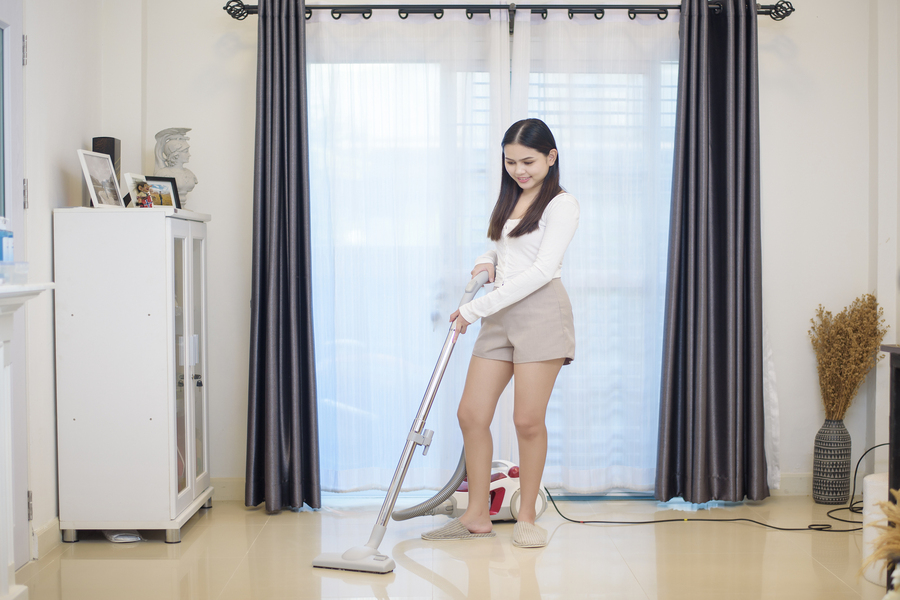Before you fill your steam cleaner with water and get to work, it’s essential to understand the implications of using steam on laminate surfaces.
What is a Steam Cleaner?
A steam cleaner is a versatile cleaning tool that utilizes the power of steam to sanitize and clean surfaces effectively. Unlike conventional mops or cleaning solutions, steam cleaners generate high-temperature steam that penetrates dirt, grime, and bacteria, making it an eco-friendly option for households seeking a deeper clean without harsh chemicals.
Typically, steam cleaners come in various forms, including handheld devices, cylinder models, and upright machines, each designed to cater to different cleaning needs. They usually consist of a water reservoir, a heating element, and a nozzle or brush attachment that releases the steam.
One of the key advantages of using a steam cleaner is its ability to clean and sanitize multiple surfaces—from floors and carpets to countertops and upholstery. However, while steam cleaners can be incredibly effective on many surfaces, understanding their interaction with specific materials, like laminate flooring, is crucial.
Benefits of Using Steam Cleaners
First and foremost, steam cleaning is an eco-friendly option that utilizes just water, eliminating the need for harsh chemicals that can harm the environment and leave behind irritating residues. This makes it an ideal choice for families with children or pets, as it ensures a safe and healthy living space without compromising on cleanliness.

Another significant advantage of steam cleaners is their ability to eliminate stubborn dirt and grime. The high-temperature steam penetrates the surface of laminate floors, breaking down tough stains and lifting away trapped debris with ease. This deep cleaning action not only enhances the aesthetic appeal of your floors but also prolongs their lifespan by removing particles that might cause wear and tear over time.
Additionally, steam cleaners are a time-saving solution. With their quick heat-up time and efficient cleaning capabilities, you can cover large areas in a fraction of the time it would take with traditional mopping methods. The convenience of a steam cleaner allows you to tackle your cleaning tasks swiftly, giving you more time to enjoy your beautifully maintained home.
Lastly, steam cleaning is highly effective at sanitizing surfaces. The high temperatures of the steam can kill a wide range of bacteria, viruses, and allergens, making your home a healthier place to live. This added layer of cleanliness is particularly beneficial for those with allergies or respiratory issues, ensuring that your laminate floors contribute to a safe and inviting atmosphere.
Potential Risks of Steam Cleaning Laminate Floors
Laminate floors, known for their durability and low-maintenance appeal, can be quite sensitive to excessive moisture and heat.
One of the primary concerns with steam cleaning is the potential for warping. The high temperatures generated by steam cleaners can penetrate the seams of laminate planks, causing the adhesive beneath to loosen and the boards to swell or warp. This is particularly true if the steam is left concentrated on one spot for too long, which can create hot spots that damage the floor’s integrity.
Moreover, laminate floors are typically designed to resist moisture, but they are not waterproof. Excessive steam can lead to water seeping into the joints, leading to mold and mildew growth over time. This not only poses a risk to the floor itself but can also create an unhealthy indoor environment.
Another risk to consider is the finish of the laminate. Many manufacturers apply a protective coating to laminate floors, which can be compromised by the high heat and moisture from steam cleaning. If the finish starts to wear off, it can leave your floors looking dull and less appealing.
Lastly, if your laminate flooring is not installed properly, steam cleaning may exacerbate any existing issues related to gaps and uneven surfaces. It’s crucial to weigh these potential risks against the benefits of steam cleaning and consider alternative cleaning methods that may be safer for your laminate floors, such as using a damp microfiber mop or a gentle cleaner specifically designed for laminate surfaces.
Manufacturer Guidelines: What to Check Before Using a Steam Cleaner
Start by checking if your laminate flooring is labeled as “water-resistant” or “waterproof.” While some modern laminate options can handle minor exposure to moisture, many are not designed to withstand the high temperatures and moisture levels produced by steam cleaning. Using a steam cleaner on non-water-resistant laminate can lead to warping, bubbling, or delamination, ultimately ruining the floor’s structural integrity.
Additionally, pay attention to any recommendations regarding cleaning products. Some manufacturers suggest avoiding certain chemicals that could damage the finish of your laminate. If your floors have a protective coating, it’s essential to use a gentle cleaner that aligns with the manufacturer’s specifications, ensuring that you preserve that glossy shine without compromising the material.
Lastly, look for any warranty conditions. Using a steam cleaner contrary to the manufacturer’s advice could void your warranty, leaving you without recourse if damage occurs.
Recommended Steam Cleaner Features for Laminate Floors
To effectively maintain the beauty and integrity of your laminate surfaces, it’s crucial to choose a steam cleaner equipped with the right features. Here are some recommended features to look for when selecting a steam cleaner specifically designed for laminate floors.
a) Adjustable Steam Settings
One of the most vital features is the ability to control steam output. Laminate floors can be sensitive to high heat and excessive moisture. A steam cleaner with adjustable settings allows you to customize the steam intensity, ensuring you provide just the right amount of cleaning power without risking damage to your flooring.
b) Lightweight and Maneuverable Design

Laminate floors are often laid in larger areas, making it essential to have a steam cleaner that is easy to maneuver. Look for lightweight models that can glide smoothly across the floor without straining your wrist. A compact design can also make it easier to reach corners and under furniture
c) Microfiber Cleaning Pads
Opt for a steam cleaner that comes with high-quality microfiber cleaning pads. These pads are highly effective at trapping dirt and grime while being gentle enough to avoid scratching your laminate surface. Additionally, machine-washable pads are a bonus, allowing for easy reuse and reduced environmental impact.
d) Quick Heating Time
Time efficiency is key when cleaning, especially if you have a busy household. A steam cleaner that heats up quickly means you can get to cleaning without long waits. Look for models that can reach optimal steam temperature in under a minute to streamline your cleaning routine.
e) Versatile Attachments
Consider a steam cleaner that offers various attachments for different cleaning tasks. Accessories such as brushes or detail nozzles can assist in tackling stubborn stains or grime in crevices. Having the right tools handy ensures you can maintain your laminate floors effectively.
How to Safely Use a Steam Cleaner on Laminate
Using a steam cleaner on laminate floors can be a double-edged sword; while it promises a deep clean and a shine that can make your floors look brand new, improper use can lead to irreversible damage. To harness the power of steam cleaning safely, follow these essential guidelines to protect your investment and ensure your laminate flooring remains in pristine condition.
1. Check Your Manufacturer’s Guidelines
Before you even think about breaking out the steam cleaner, consult your laminate flooring manufacturer’s care instructions. Some brands explicitly advise against steam cleaning due to the risk of moisture damage. If your floors are steam-cleaner friendly, you can proceed with confidence.
2. Prepare Your Space
Remove any furniture, rugs, or obstacles from the floor to give yourself ample space to work. This will not only make cleaning easier but also prevent any accidents that could occur if you inadvertently drag furniture across the floor while cleaning.
3. Use the Right Attachment
Most steam cleaners come with a variety of attachments; for laminate flooring, it’s crucial to use a flat mop attachment or a microfiber pad. These are designed to distribute steam evenly and minimize the risk of excess moisture pooling in any one area.
4. Adjust the Steam Settings
If your steam cleaner offers adjustable steam settings, opt for the lowest setting. High-pressure steam can be overly harsh on laminate, leading to warping or delamination. A gentle steam application will effectively lift dirt and grime without compromising the integrity of your floors.
5. Keep Your Distance
Maintain a distance of about 12 inches between the steam nozzle and the floor surface. This allows the steam to cool slightly before making contact with the laminate, further reducing the risk of damage.
6. Ensure Proper Drying
After steam cleaning, it’s important to let the floor dry completely before walking on it or replacing furniture. Open windows or doors to promote airflow and speed up the drying process, which will help prevent any moisture-related issues.
Signs of Damage from Improper Steam Cleaning
One of the most telltale signs of damage is warping or buckling. If you notice that your laminate planks are beginning to lift or curve, it’s a clear indication that excess moisture from steam cleaning has penetrated the seams. Laminate floors are designed to be water-resistant, but too much steam can break down the protective layers, allowing water to seep in and cause expansion.
Another symptom to watch for is the appearance of dullness or loss of luster. High temperatures and excessive moisture can strip away the floor’s finish, making it look tired and worn. If your once-vibrant laminate appears lackluster or has developed a cloudy residue, it’s a sign that steam cleaning may have been too aggressive.
Additionally, you might encounter peeling or chipping at the edges of the planks. This can occur when the steam cleaner is held too close to the surface, causing the laminate material to weaken and flake away. Over time, this not only detracts from the aesthetic appeal but can also lead to further damage and costly repairs.
Lastly, watch for any unusual odors. If your floors start to emit a musty smell after steam cleaning, it could indicate that moisture has become trapped beneath the surface, leading to mold or mildew growth. This not only affects the flooring but can also pose health risks in your home.
In summary, while steam cleaning can be an effective way to keep your laminate floors looking their best, it’s important to be mindful of the potential for damage.




